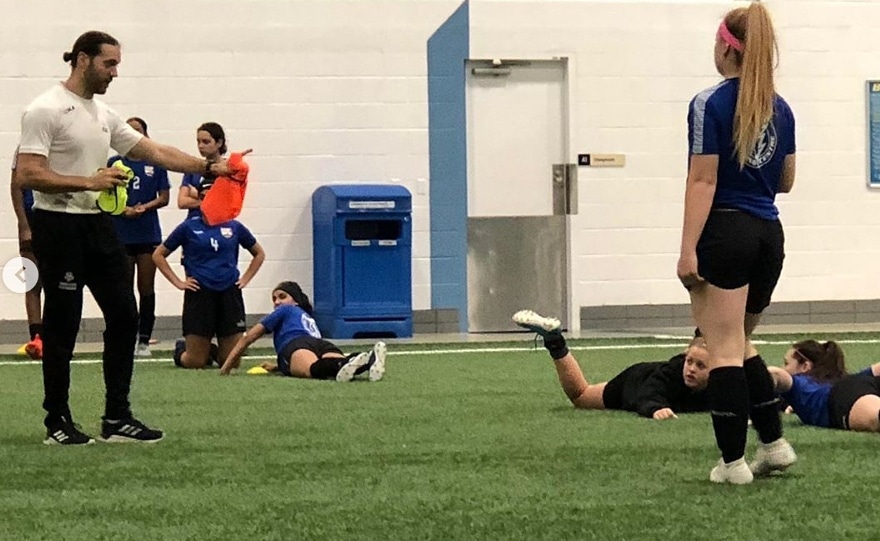

Load Management – The Key to Better Fitness Training
For more on this topic check out our FREE webinar – Prescribe & Monitor Training Load Without Expensive, Time Consuming & Hard to Use Technology
Periodization is fast becoming a popular buzz word among soccer coaches and fitness coaches.
Last summer, the city of Toronto became captivated by the Toronto Raptors’ first-ever NBA Championship, spearheaded by the incredible play-off performances from star forward Kawhi Leonard.
Throughout the 2018-2019 season, Leonard had been plagued by injuries. He later credited the “load management” strategies used by the medical and strength and conditioning staff of the Raptors for allowing him to get healthy and optimize his performance in the post-season.
What exactly is “load management,” and how can coaches use it to keep their players healthy and performing at their best?
Periodization is fast becoming a popular buzz word among soccer coaches and fitness coaches. However, few coaches truly understand periodization and how a properly designed, periodized training program can help them manage and optimize their players’ training load. The goal is to improve physical fitness and minimize the risk of sickness or injury.
Periodization is a fancy word for planning of training throughout the year. It encompasses planning of individual training sessions, plus cycles or phases of training sessions that lasts for weeks, months, and eventually the entire year.
Planning of physical training, or physical periodization, must be centred on the planning of training load, which can be thought of as the stress experienced by athletes when they perform physical workouts or training sessions.
I know what you’re thinking – stress can’t be good for athletes!
Periodization, which involves progressively increasing training load in order to achieve gain in fitness, can only be achieved through detailed planning and monitoring of training load, with constant adjustments made along the way.
Stress, in this sense, is synonymous with pushing the athlete’s limits, and when administered in a controlled and measured way it should increase the strength, functionality, and resiliency of the athlete’s body. The controlled, measured and applied stress stimulates a response in the system which strengthens and protects the body against the potential damage of future stress.
This same type of stimulus-response pattern is applicable to the stress experienced by athletes following training sessions and cycles of training, too. If the stress or training load, is administered in an optimal way, with just the right amount of stress during the training, followed by just the right amount of rest or recovery afterwards, then athletes’ physical systems (including the aerobic, anaerobic, and musculoskeletal systems) will be stimulated to respond by adapting to the stressors and becoming stronger.
Thus, training load, which is the product of volume – how long was the training? – and intensity – how hard was training? – must be carefully planned out before each individual training session, and each cycle of training sessions, and it must also be monitored following the completion of each training session and cycle, in order for coaches to evaluate the effectiveness of their plan.
When an individual player measures at a higher intensity – i.e. physiological response – to a particular training session than the coach intended, then this might be a sign that the player will need an adjustment to their training load to prevent overtraining. Overtraining generally results in sickness or injury, which can be a consequence of a training load that is higher than the athlete can handle.
In this case, the player would benefit from a load management protocol, which may involve decreasing their training load (by decreasing volume, intensity, or both), or by having them sit out from training altogether for one or more training sessions.
Similarly, if the team’s average actual training load was either much higher or much lower than planned, the planned training load for future training sessions would then need to be adjusted by making changes to volume, intensity, or both, until the desired loading is achieved.
Periodization, which involves progressively increasing training load in order to achieve gain in fitness, can only be achieved through detailed planning and monitoring of training load, with constant adjustments made along the way.
Without this constant process of planning and monitoring of training load, individual players’ and whole teams’ training loads will never be properly managed. The result in the best-case scenario, is a compromised fitness levels with little or no adaptations; or, in the worst–case scenario, sickness and injury from overtraining.
Load management for athletes has never been more important than now, during the pandemic, when all athletes’ are training off-site, at home, and away from coaches and fitness coaches.
That’s why we have scheduled a FREE Webinar for athletes, parents and coaches, where we will teach you a simple, easy-to-use method of measuring training load, without the need for expensive technology that you will not have access to for the next few months.
Get to know more about Soccer HUB!
Categories
Latest Courses
-
9 Lessons
-
1 Lesson
-
6 Lessons
You May Also Like
-
-
August 1, 2022
-
-
June 3, 2022
-
-
May 27, 2022





